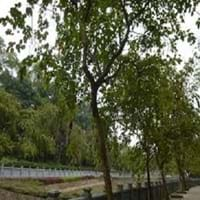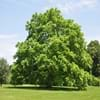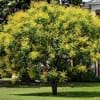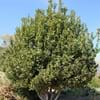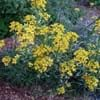Life Span
Biennial
Biennial
Origin
North America, United States, Northeastern United States, Mid-Atlantic United States, North-Central United States, Central United States, Canada
South-Eastern Asia, Southeastern Asia, China
Types
Not Available
Purple Orchid Tree, White Orchid Tree, Bidi leaf tree
Habitat
Anthropogenic, Floodplains, Forests
Forests, Mountain Slopes, Valley
USDA Hardiness Zone
3-9
9-13
Sunset Zone
1a, 1b, 2a, 2b, 3a, 3b, 4, 5, 6, 7, 8, 9, 14, 15, 16, 17
H1, H2, 9, 10, 11, 13, 18, 19, 20, 21, 22, 23
Habit
Oval or Rounded
Upright/Erect
Flower Color
Yellow green
Light Pink, Magenta, Violet
Flower Color Modifier
Bicolor
Bicolor
Fruit Color
Green, Brown
Green, Sandy Brown
Leaf Color in Spring
Light Green
Green, Gray Green
Leaf Color in Summer
Green, Dark Green
Green, Gray Green
Leaf Color in Fall
Yellow, Gold
Green, Gray Green, Yellow green
Leaf Color in Winter
Not Available
Green, Gray Green, Yellow green
Leaf Shape
Pinnate
Butterfly shaped
Plant Season
Spring, Summer, Fall
Spring, Summer
Sunlight
Full Sun
Full Sun, Partial Sun
Type of Soil
Clay, Loam
Clay, Loam, Sand
The pH of Soil
Acidic, Neutral, Alkaline
Acidic, Neutral
Soil Drainage
Well drained
Well drained
Bloom Time
Late Spring, Early Summer
Early Spring, Spring
Tolerances
Not Available
Drought
Where to Plant?
Ground
Ground
How to Plant?
Seedlings
Budding, Grafting, Seedlings
Plant Maintenance
Medium
Medium
Watering Requirements
Average Water Needs, Do Not over Water, Requires regular watering
Average Water Needs, Keep the ground moist but not water-logged, Water Deeply
In Summer
Lots of watering
Lots of watering
In Spring
Moderate
Moderate
In Winter
Average Water
Average Water
Soil pH
Acidic, Neutral, Alkaline
Acidic, Neutral
Soil Type
Clay, Loam
Clay, Loam, Sand
Soil Drainage Capacity
Well drained
Well drained
Sun Exposure
Full Sun
Full Sun, Partial Sun
Pruning
Remove damaged leaves, Remove dead branches, Remove dead leaves
Remove branches, Remove damaged leaves, Remove dead branches, Remove dead leaves, Remove dead or diseased plant parts
Fertilizers
All-Purpose Liquid Fertilizer
Apply N-P-K
Pests and Diseases
Red blotch
Red blotch
Plant Tolerance
Not Available
Drought
Flowers
Insignificant
Showy
Flower Petal Number
Not Available
Single
Fragrant Leaf
Not Available
No
Fragrant Bark/Stem
Not Available
No
Foliage Texture
Coarse
Medium
Foliage Sheen
Matte
Matte
Attracts
Birds, Squirrels
Birds
Allergy
Gastric, Pollen
Not Available
Aesthetic Uses
Not Available
Not Available
Beauty Benefits
Good for skin
Not Available
Environmental Uses
Air purification, Shadow Tree
Air purification, Nesting sites for birds, Shadow Tree
Medicinal Uses
Dysentry, Intestinal irritations, Small pox, Stomach pain
Carminative, Laxative
Part of Plant Used
Sap, Seeds
Buds, Flowers, Leaves, Root, Seeds, Stem
Other Uses
Application in Furniture, Decorative veneers, flooring, paneling, Herbicide
Fibre, Gum, Used as a dye
Used As Indoor Plant
No
No
Used As Outdoor Plant
Yes
Yes
Garden Design
Edible, Shade Trees
Feature Plant, Shade Trees, Street Trees, Tropical
Botanical Name
JUGLANS cinerea
BAUHINIA purpurea
Common Name
Butternut
Butterfly Tree, Orchid Tree
In Hindi
Butternut Tree
Butterfly tree
In German
Butternut Baum
Schmetterlings- Baum
In French
noyer cendré
arbre de papillon
In Spanish
árbol de nogal
árbol de la mariposa
In Greek
Butternut Δέντρο
δέντρο πεταλούδα
In Portuguese
Árvore Butternut
árvore borboleta
In Polish
butternut Drzewo
drzewo Butterfly
In Latin
Butternut ligno
Gloria ligno
Phylum
Magnoliophyta
Magnoliophyta
Class
Magnoliopsida
Magnoliopsida
Order
Juglandales
Fabales
Family
Juglandaceae
Fabaceae
Clade
Angiosperms, Eudicots, Rosids
Angiosperms, Eudicots, Rosids
Tribe
Not Available
Cercideae
Subfamily
Not Available
Caesalpinioideae
Number of Species
Not Available
Season and Care of Butternut Tree and Butterfly Tree
Season and care of Butternut Tree and Butterfly Tree is important to know. While considering everything about Butternut Tree and Butterfly Tree Care, growing season is an essential factor. Butternut Tree season is Spring, Summer and Fall and Butterfly Tree season is Spring, Summer and Fall. The type of soil for Butternut Tree is Clay, Loam and for Butterfly Tree is Clay, Loam, Sand while the PH of soil for Butternut Tree is Acidic, Neutral, Alkaline and for Butterfly Tree is Acidic, Neutral.
Butternut Tree and Butterfly Tree Physical Information
Butternut Tree and Butterfly Tree physical information is very important for comparison. Butternut Tree height is 1,220.00 cm and width 1,220.00 cm whereas Butterfly Tree height is 760.00 cm and width 17.80 cm. The color specification of Butternut Tree and Butterfly Tree are as follows:
Butternut Tree flower color: Yellow green
Butternut Tree leaf color: Light Green
Butterfly Tree flower color: Light Pink, Magenta and Violet
- Butterfly Tree leaf color: Green and Gray Green
Care of Butternut Tree and Butterfly Tree
Care of Butternut Tree and Butterfly Tree include pruning, fertilizers, watering etc. Butternut Tree pruning is done Remove damaged leaves, Remove dead branches and Remove dead leaves and Butterfly Tree pruning is done Remove branches, Remove damaged leaves, Remove dead branches, Remove dead leaves and Remove dead or diseased plant parts. In summer Butternut Tree needs Lots of watering and in winter, it needs Average Water. Whereas, in summer Butterfly Tree needs Lots of watering and in winter, it needs Average Water.

